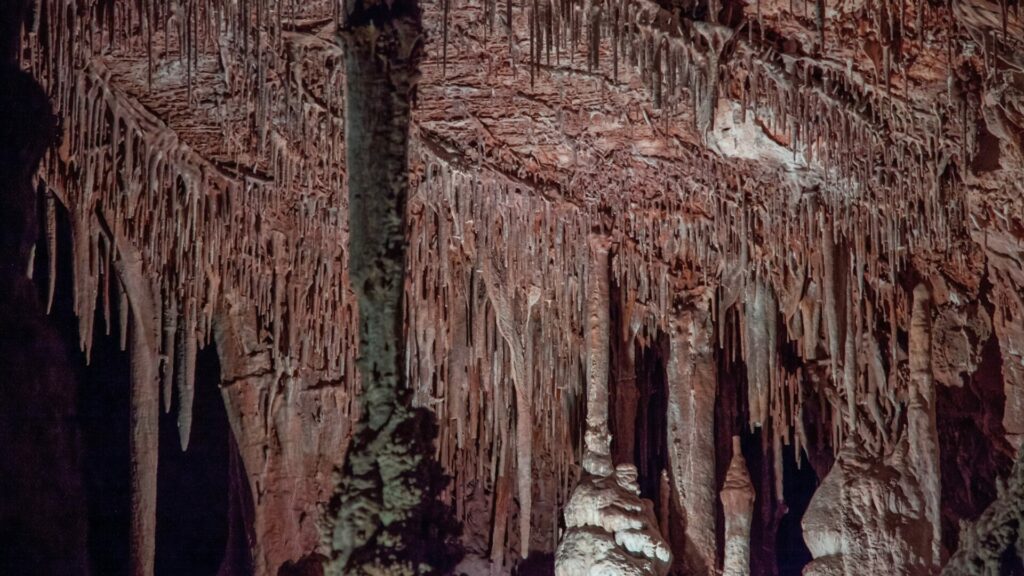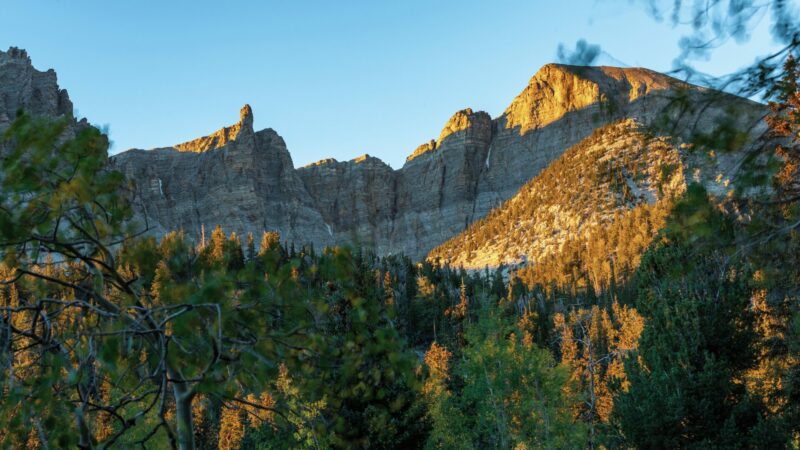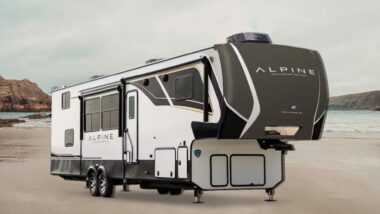Table of Contents Show
In 2014, Great Basin National Park welcomed over 100,000 visitors for the first time. Since then, the park has had 140,000-160,000 annual guests. This is a far cry from the millions of people who head to the “Mighty Five” of neighboring Utah.
But does that mean Great Basin National Park isn’t worth visiting? Let’s look closer at this Nevada park and what you can do when you visit!
Pro Tip: If you’re taking a trip out to NV, be sure to read Out of This World Landscape of Moon Rocks, Nevada before planning your next adventure!
Where Is Great Basin National Park?
Great Basin National Park is located in eastern Nevada near the Nevada-Utah border. It sits east of Highway 93 and south of Highway 6-50. Great Basin is in a relatively remote area of Nevada, with the nearest town of Ely about an hour away.
Provo, Utah is about three hours northeast. This rugged landscape includes deserts, mountain peaks, subalpine lakes, and underground caves.
When Did Great Basin National Park Become A National Park?
In 1885, Ab Lehman discovered a cave and installed ladders and stairs for people to access the system. By fall, tours began of Lehman Caves. By 1912, the cave was added to the Forest Service. Ten years later, President Harding declared Lehman Caves a National Monument.
After the creation of the National Park Service, Lehman Caves National Monument was transferred to its jurisdiction. Finally, on October 27, 1986, Great Basin National Park was established, and Lehman Caves National Monument became part of the park.

What’s So Special About Great Basin National Park?
Great Basin National Park is one of the least visited parks in the Lower 48. It’s more remote and isn’t as “fancy” as some of the bigger names in the area, like Zion, Bryce Canyon, and Grand Canyon. But that doesn’t mean it’s not worth protecting.
This Nevada park is home to some of the oldest trees on Earth, the rare Great Basin bristlecone pine. It’s also home to the Bonneville cutthroat trout, the only trout species native to the park, and ten species of bats, including the Townshend’s big-eared bat with a wingspan of 11 inches.
With such a diverse landscape of desert and mountain peaks, Great Basin National Park includes Wheeler Peak, which is the highest point in the park at 13,060 feet above sea level, and the Mountain View Nature Trail, which is the lowest point in the park at 6,825 feet. The scenic drive will take you through 4,000 feet of elevation change and the various ecosystems of Great Basin National Park.
3 Most Popular Attractions In Great Basin National Park
There are dozens of hiking trails in Great Basin National Park, rating from easy to strenuous. Almost all of them are over a mile in total length. Check out the webpage to choose the best hike suitable for you. But besides hiking, we have three popular attractions in Great Basin. Let’s take a look!
1. Take A Lehman Caves Tour
Lehman Caves is the longest cave system in Nevada and started forming millions of years ago. You cannot enter the caves without a ranger. Guests can take the Lodge Room or Grand Palace tours in the summer. In the winter, only Lodge Room tours are offered. The Lodge Room tour is 60 minutes and relatively easy, while the Grand Palace tour is 90 minutes and more strenuous.
Tours often sell out, so we highly recommend getting them early on Recreation.gov. White Nose Syndrome Screening is mandatory at the Lehman Caves Visitor Center before going on the tour.

2. Drive the Wheeler Peak Scenic Drive
We mentioned how the scenic drive through Great Basin National Park will take you through thousands of feet in elevation change as different life zones. The self-guided auto tour “Great Basin Life Zones” is free on the official NPS app. The 12-mile Wheeler Peak Scenic Drive starts at the Lehman Caves Visitor Center, an area dominated by the low-lying sagebrush.
As you journey, you’ll notice a change to taller pinyon pine trees, rougher Curleaf Mountain Mahogany, and mixed conifers of white fir, Douglas fir, and ponderosa pine. Aspens greet you at the higher elevation at the end of the drive. Don’t forget to stop at the pull-outs along the road, which offer excellent photo opportunities and take you to popular trailheads.
3. Attend A Program At the Astronomy Amphitheater
In 2016, the International Dark Sky Association recognized Great Basin National Park as an International Dark Sky Park because of its clear nights and little light pollution. The low humidity and high elevations also create spectacular night skies. Anywhere in the park, you’re likely to see thousands of stars, star clusters, satellites, meteors, the Andromeda Galaxy, and the arc of the Milky Way, even without a telescope.
During the summer, Great Basin Astronomy Rangers lead programs at the Astronomy Amphitheater every Wednesday, Thursday, and Saturday. The 30-minute ranger talk is followed by 90 minutes of viewing objects through telescopes. It’s fun for the whole family!

If you visit Great Basin National Park in the summer, check out the wildflowers along the Baker Creek Trail. This moderate hike climbs 1,800 feet in elevation and meanders along lush riparian, semi-arid, dense woodland, and wet meadow areas.
Brilliant golds of the Arrowleaf Balsamroot and pale pinks of the Manzanita welcome hikers in late May. In later summer, visitors will also see Sego Lilies, White Bob Orchids, Yellow Monkey Flowers, clover, parsley, monkshood, Shooting Stars, Columbine, Yarrow, Fleabane, Blue-eyed Mary, Bluebells, Harebells, Prickly Pear, and Lupine.
Best Places For Camping Near Great Basin National Park
Great Basin National Park has five campgrounds. The Wheeler Peak Campground is the highest in elevation and only permits RVs up to 24 feet long. However, RVs up to 50 feet long will find accommodations at Baker Creek Campground. The Lower Lehman Creek Campground and Upper Lehman Creek Campground can accommodate rigs up to 40 feet long. RVs aren’t permitted at Grey Cliffs Campground. None of the campgrounds have hookups, and not all have access to potable water.
There are also public lands and private campgrounds outside the park. Campers can check out the options in the Humbolt-Toiyabe National Forest or the Sacramento Pass for dispersed camping. The Whispering Elms Motel/RV and Tent Camping, situated on Highway 487 at the base of Great Basin National Park, is the closest private campground. It offers full hookup sites.

Is Visiting Great Basin National Park Worth It?
Great Basin National Park may not be a household name. But it’s a beautiful area in eastern Nevada, covering approximately 77,000 acres. Explore the Lehman Caves, travel the scenic drive, and stay for nature’s evening show. We’d love your feedback if you’ve been to Great Basin National Park! What would you suggest for visitors to do?






